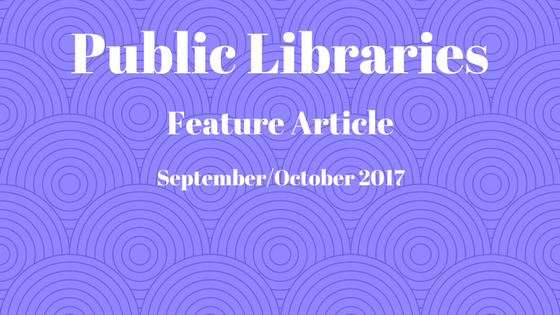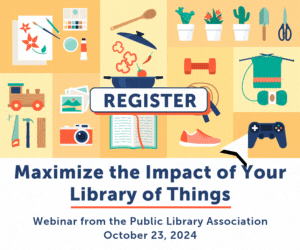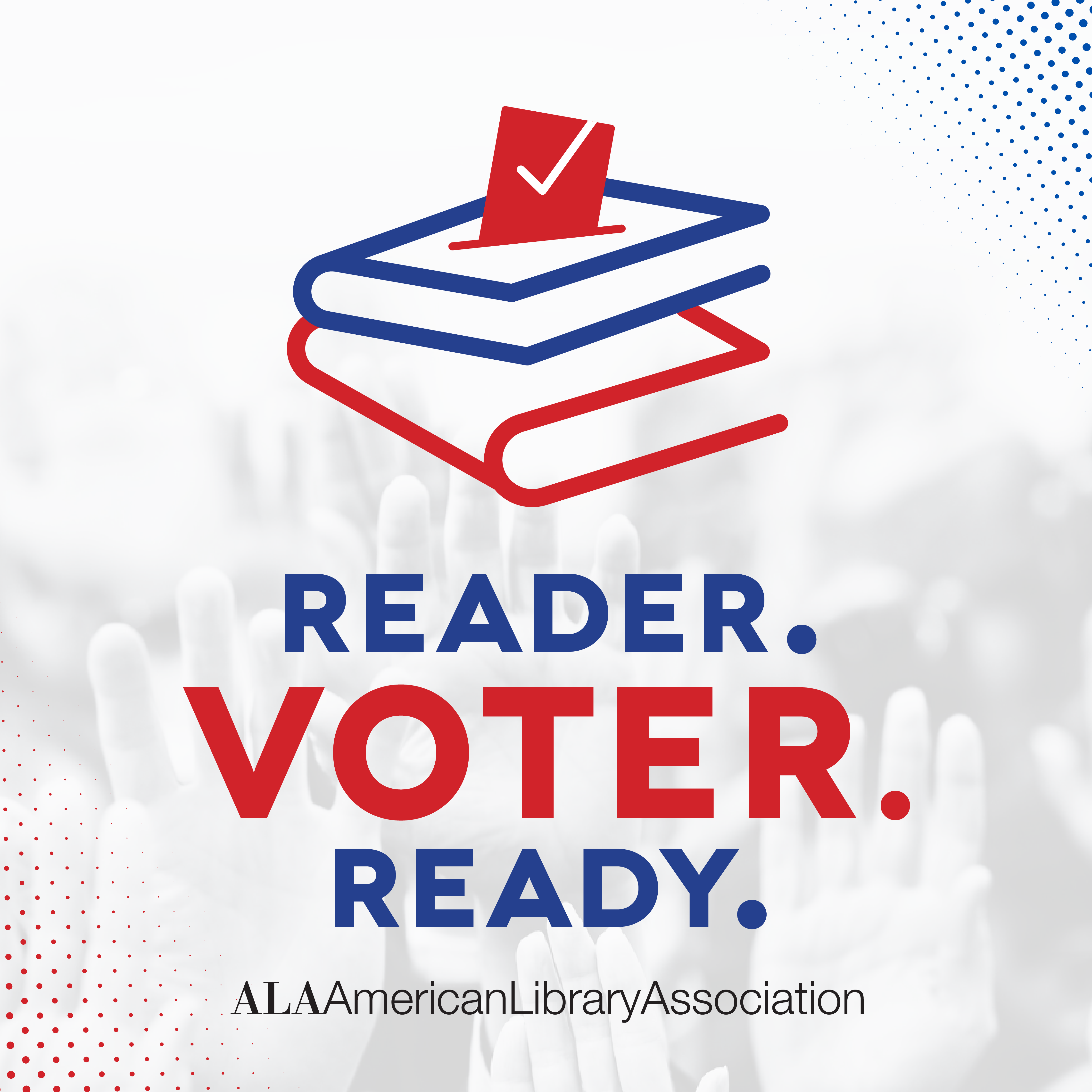Reading Confidence with Tail Waggin’ Tutors

STACY LOVERIDGE is an MLIS Student at Wayne State University in Detroit and an Information Specialist on the ERIC Project at Zimmerman Associates, Inc. (ZAI). Contact Stacy at stacyloveridge@gmail.com. Stacy is currently reading Brain on Fire: My Month of Madness by Susannah Cahalan.
Two young brothers eagerly enter the library on a brisk winter morning with a thoughtful selection of books clutched in their hands. They are not returning these books, but have carefully chosen titles from their own collection, and a stack of library books that they are borrowing, to read to their canine friends that visit the Glen Burnie (MD) Regional Library (GBRL) on the second Saturday morning of each month. Tail Waggin’ Tutors, a program that encourages young readers to practice their literacy skills by reading aloud to a trained therapy dog and handler, has pushed both boys to excel in their reading abilities. Seven-year-old Zach, who was eager to learn to read at a very early age, learned about the program at a summer reading event when he was four years old. The program motivated him even more to read early on. His younger brother Tyler, who is five, followed in the footsteps of his older brother by also learning to read at an early age and has been participating in the program since the age of four. They both prepare by consciously choosing books that they think their canine friends will enjoy. This program has motivated both boys to read consistently and has given them the confidence to read aloud. They found a love for reading at a very early age and much of this is credited to their participation in Tail Waggin’ Tutors through the Anne Arundel County (MD) Public Library (AACPL) System.
Canine-Assisted Reading
Children who participate in canine-assisted reading programs are likely to develop confidence in their reading skills and find reading to be more enjoyable.1 While there has not yet been an extensive amount of data to be found to prove the effectiveness of children reading to therapy dogs at drop-in library programs, a research study conducted by the Davis Veterinary Medicine Extension at the University of California found that school children who read to therapy dogs on a regular basis improve their reading fluency by 12 percent.2 Studies that are available on canine-assisted library reading programs have found results for improvements in oral reading fluency and accuracy, along with significant increases in engaged reading time and significant improvements in reading skills, such as the ability to explain, describe, analyze, and infer.3 Children who feel self-conscious reading to an adult or peer are usually very comfortable reading to a therapy dog. Children know that dogs will not judge their reading skills. Reading to a therapy dog can provide comfort, support, and happiness for struggling and self-conscious readers.4
Types of Therapy Dog Interactions
There are two different types of therapy dog interactions with humans, Animal- Assisted Therapy (AAT) and Animal- Assisted Activities (AAA). Both types of therapy dog interactions require a certified animal. The Delta Society, a nonprofit therapy dog organization in Australia, provides the following definitions:
- Animal-Assisted Therapy is a goal-directed intervention in which an animal that meets specific criteria is part of a treatment process. These programs are usually directed and delivered by human health or human services. These professionals have specialized expertise within the scope of practice of their profession. This type of therapy is designed to improve human physical, social, emotional, and cognitive function. The therapy animals may be formally included in activities such as physical, occupational, or speech therapy. Specified goals and objectives are determined for each participant and their progress is evaluated and documented.5
- Animal-Assisted Activities provide opportunities for motivation, education, or recreation to enhance quality of life. AAA can be delivered in various environments, such as libraries, schools, or bookstores. AAA are provided by specially trained professionals, paraprofessionals, and volunteers, along with animals that meet specific criteria. AAA are not usually tailored to individual people or medical conditions. Visit content can be spontaneous and length of visit times vary. Canine-assisted library reading programs typically utilize AAA interactions, due in large part to their drop-in nature. Children attending may or may not attend every program. The dog handler is volunteering and usually not a medical professional.6
In canine-assisted reading programs, children choose their own material to read. The general goal is to boost reading skills, along with social skills. Children read for a short amount of time, usually in fifteen- or thirty-minute time slots. The setting is very laid back and comfortable, without observations from a professional measuring the effects and outcomes. Feedback and program effectiveness is provided by the caregivers and the children, along with program attendance rates. Caregivers or children may be asked to fill out a survey or verbally answer questions from the library staff relating to their satisfaction with the program. Surveys and answering staff questions are always voluntary and not mandatory. The use of therapy dogs to aid in reading development has been found to increase enthusiasm and interest in reading, along with improving self-esteem, reducing disruptive behaviors, and has led to improvement in reading and writing.7
READ: The First Canine-Assisted Reading Program
The first canine-assisted reading program in the United States began in Utah in 1999. Reading Education Assistance Dogs (READ) was created by Sandi Martin, a nurse and board member of the International Therapy Animals (ITA) organization. After observing the positive benefits that therapy dogs brought to patients, she believed children could have positive outcomes with the presence of a therapy dog to improve reading skills. The original READ program took place in a library setting with a trained dog and dog handler. Sessions were arranged as fifteen-minute time slots with a ratio of one-to-one dog to-client. The program was so successful that within the first year it was incorporated into the school system.8 Following the success of the original READ program, similar programs began to evolve all over the country: Sit Stay Read in Birmingham (AL); Dogs Educating and Assisting Readers (DEAR) in Baltimore; Reading with Rover in Bothell (WA); and Read to the Dogs in Portland (OR), to name a few.9 The various programs may differ, such as the age level of the children, length of one-on-one reading time, venue (public libraries, schools, bookstores, or childcare centers), selection of participants (self-selected, parents, teachers, or reading specialists), selector of reading materials, and ability level of the participants.10 However, they all have the same goal, to assist in developing a generation of young confident readers. While there is a lack of extensive scientific evidence, benefits from these programs are consistent to one another, reporting increases in self-confidence, enthusiasm for library visits, and interest in stories and reading.11
Certified Therapy Dogs are Essential
It is imperative for the success of canine-assisted reading programs to use certified therapy dogs and handlers. Therapy dog organizations ensure that the dogs are suitable and insured. Therapy dogs are insured against lawsuits when they are a member of a therapy dog organization and are in good standing with vaccinations, training, and dues. Their handlers are trained for various situations and follow rules established by the therapy dog organization to protect themselves, their therapy dog, and the clients they serve. All of this is very important for canine-assisted library reading programs to protect the library, dogs, handlers, and most importantly the children participating.12
It is common for therapy dog organizations to have training standards in place for therapy dogs and handlers who will be working with children. They may also have their own process and procedure to help libraries establish canine-assisted reading programs.13
Therapy Dog Organizations
There are national therapy dog organizations that have specialized programs to train dogs and handlers to participate in canine-assisted reading programs. Local chapters of these organizations exist throughout the United States.
Therapy Dogs International
The nonprofit volunteer organization Therapy Dogs International (TDI) was founded in 1976 in New Jersey. TDI is dedicated to regulating, testing, and the registration of therapy dogs and their volunteer handlers. TDI dogs are certified to visit nursing homes, hospitals, other institutions, and wherever else therapy dogs may be needed. TDI volunteers and handlers are present in all fifty United States and in some parts of Canada. Tail Waggin’ Tutors is TDI’s canine-assisted reading program. The main objective of the program is to provide a relaxed and dog-friendly atmosphere, which allows children to practice the skill of reading.14 Visit www.tdi-dog.org for more information.
Intermountain Therapy Animals
The mission of this nonprofit organization is to enhance quality of life through the human-animal bond. Since 1999 when the READ program launched, ITA has trained more than three thousand therapy teams (dogs and handlers) to work throughout the United States, Canada, United Kingdom, Italy, Finland, France, Sweden, South Africa, Slovenia, and Spain.15 For more information, visit www.therapyanimals.org.
Pet Partners
The nationwide nonprofit organization Pet Partners, located in Bellevue (WA), came together forty years ago to improve human health and well-being through the human-animal bond. The Pet Partners Therapy Animal Program was established in 1990 to ensure that dogs and handlers are well-prepared to participate in AAT and AAA programs for therapy pets. Read with Me is Pet Partners’ canine-assisted reading program that promotes literacy and instills a lifelong love of reading by having children read with therapy animals.16 For more information, visit https://petpartners.org.
Tail Waggin’ Tutors at GBRL
Jesse Roth, a librarian who previously worked at GBRL, had been interested in bringing a canine-assisted reading program to the library for years. In the spring of 2014, she began researching to see what organizations were out there that supported such programs. Roth learned about TDI through a librarian at another AACPL branch that had been running a canine-assisted reading program for a few years. Roth contacted TDI to begin the process of launching a program at GBRL. She learned that TDI used the branding name Tail Waggin’ Tutors and inquired about what the library would need to do to participate. A Memorandum of Understanding (MOU) was signed to ensure that the library followed the participation rules. Once the MOU was in place, TDI emailed active volunteers in the area to let them know that the GBRL was seeking volunteers for the program. The first Tail Waggin’ Tutors program was held at GBRL in September 2014 and has run as an (almost) monthly event ever since.
All volunteers for the program are affiliated with TDI, meaning their dogs are registered with the organization, have passed the K-9 Good Citizen test, and have all their required vaccinations. Initially, most of the dogs and volunteers had never participated in a canine-assisted reading program. They were experienced in doing hospital and nursing home visits, but felt that their dogs would be good candidates to work in an environment with children. Throughout the summer of 2014, Roth received emails from area volunteers that were interested in the program. She was hoping to involve at least three or four regular volunteers for the GBRL location. This would ensure that at least one was available each month for the program. Volunteers are not expected to work every program. They can participate as much, or as little, as they want to.
Once Roth got responses from four volunteers, she brought them all in for a group meeting. This was so they could meet each other and she could discuss how the program would be run. It was also a good opportunity to see if any of the dogs did not “click” or if there were any other issues or concerns that needed to be addressed. After meeting with the dogs and volunteers, Roth also met with staff members who would help host the programs to make sure each month’s program was run consistently, no matter who hosted. The branch opted to run the program one Saturday morning each month to cater to working families.
As is the nature of a volunteer-based program, commitment is always a concern. Roth handled most correspondence through email and would sometimes have to follow-up with certain volunteers that were not as great about responding to requests to work an upcoming date. Communication issues aside, some volunteers found that the schedule, or location, was not working for them and asked to stop participating. Others had personal reasons that forced them to pull out. Sadly, there was also the reality of how little time the library would have with some of the dogs. Two of the original canines passed away due to old age by the time the program reached its first anniversary. When the participant pool started to get low, Roth would contact TDI to see if they could reach out to more area volunteers. Those that responded to the TDI request were then brought in to meet with Roth, discuss the program, see the meeting room, and decide if they were willing to commit to the program. GBRL, which is off a major road and easy to access from various parts of the county, has been able to sustain a pool of regular participants.
For the program to be effective, Roth thought it would be ideal to have a one-to-one dog-to-child ratio, allowing the child to focus on the reading with minimal distractions. To ensure this ratio, a registration system was developed. However, in order to know how many slots would be available, staff would need to know how many dogs to expect. The program runs for two hours, which amounts to six fifteen-minute slots, including five minute transition periods. The transition periods are for both the volunteer and the dog to take a break and to accommodate the leaving and arriving children. Within each time slot there are typically four dog/ volunteer teams. The dog/volunteer teams are stationed in the corners of the room to ensure enough space and less noise interference.
GBRL emails volunteers a few weeks ahead of the program to ensure they can make the date. They are asked to commit to the date and to let the library know as soon as possible if they need to cancel. If the regular volunteers are not available, the library will try to solicit help from an- other branch that also runs the program. They are usually able to make it work in terms of having at least one dog available, but are always prepared to cancel for the month if no dogs are available. Volunteers are asked to stay for the entire two hours but can let the library know in advance if they can only do a portion of the program, in which case the number of slots are adjusted accordingly. When the number of dogs is known, library staff make a sign-up sheet available, ideally about a month before the program. This allows parents and children to sign up for the next program while participating in the current program. The sign-up sheet asks for the name of the child, a parent name, and a phone number, so that someone from the library can call with a reminder the day before the appointment. The information on the sign-up sheet also comes in handy if the program needs to be canceled, or if time-slots need to be adjusted, due to a volunteer dropping out, or if the library needs to close unexpectedly. Roth has since transferred to another branch in the AACPL system, but has passed the program on to another GBRL librarian. She has launched a canine- assisted reading program at her new library location.
Until Next Time, Canine Friends
Zach and Tyler were saying goodbye to their canine friends after fifteen minutes had flown by. Each dog had enjoyed the selection of books hand-picked by their reader. Zach and Tyler showed off stickers given to them by the handler of the dog that each of them had read to. The librarian encouraged them to pick out a prize from the treasure chest prize box. The box was over flowing with various note-pads, books, and games. They were then invited to sign up for the next month. Instantly they began talking about what books they should read the next time. The two brothers decided they should go over to the children’s section in the library and search for books that had dog characters. They both believed that their canine friends most enjoyed listening to stories about dogs. Tail Waggin’ Tutors at the Glen Burnie Regional Library has helped to shape two very enthusiastic and confident readers. This program has encouraged both boys to visit the library often, read aloud, and have a love for reading at a very early age. The program has given them motivation to read consistently and confidence in their reading ability.
References
- Ann Siejka, “Tail Waggin’ Tutors A Doggone Fun Way to Read!,” Children & Libraries: The Journal of The Association for Library Service to Children 14, no. 2 (2016): 32-33.
- Ibid.
- Barbara Fisher and Merle Cozens, “The BaRK (Building Reading Confidence for Kids) Canine Assisted Reading Program: One Child’s Experience,” Literacy Learning: The Middle Years 22, no. 1 (2014): 70-80.
- Holly B. Lane and Shannon D.W. Zavada, “When Reading Gets Ruff: Canine-Assisted Reading Programs,” The Reading Teacher 67, no. 2 (2013): 87-95.
- Jean Kirnan, Steven Siminerio, and Zachary Wong, “The Impact of a Therapy Dog Program on Children’s Reading Skills and Attitudes toward Reading,” Early Childhood Education Journal 44, no. 6 (Nov. 2016): 637-51.
- Ibid.
- Ibid.
- Fisher and Cozens, “The BaRK (Building Reading Confidence for Kids) Canine Assisted Reading Program: One Child’s Experience.”
- Kirnan, Siminerio, and Wong, “The Impact of a Therapy Dog Program on Children’s Reading Skills and Attitudes toward Reading.”
- Fisher and Cozens, “The BaRK (Building Reading Confidence for Kids) Canine Assisted Reading Program: One Child’s Experience.”
- Kirnan, Siminerio, and Wong, “The Impact of a Therapy Dog Program on Children’s Reading Skills and Attitudes toward Reading.”
- Siejka, “Tail Waggin’ Tutors A Doggone Fun Way to Read!”
- Lane and Zavada, “When Reading Gets Ruff: Canine-Assisted Reading Programs.”
- “Therapy Dogs International,” accessed Apr. 1, 2017, www.tdi-dog.org.
- “Intermountain Therapy Animals,” accessed Apr. 1, 2017, www.therapyanimals.org/Home.html.
- “Pet Partners,” accessed April 1, 2017, https://petpartners.org.
Tags: Dogs, early childhood literacy, early literacy activities, reading dogs, reading to dogs programs, therapy dogs libraries









